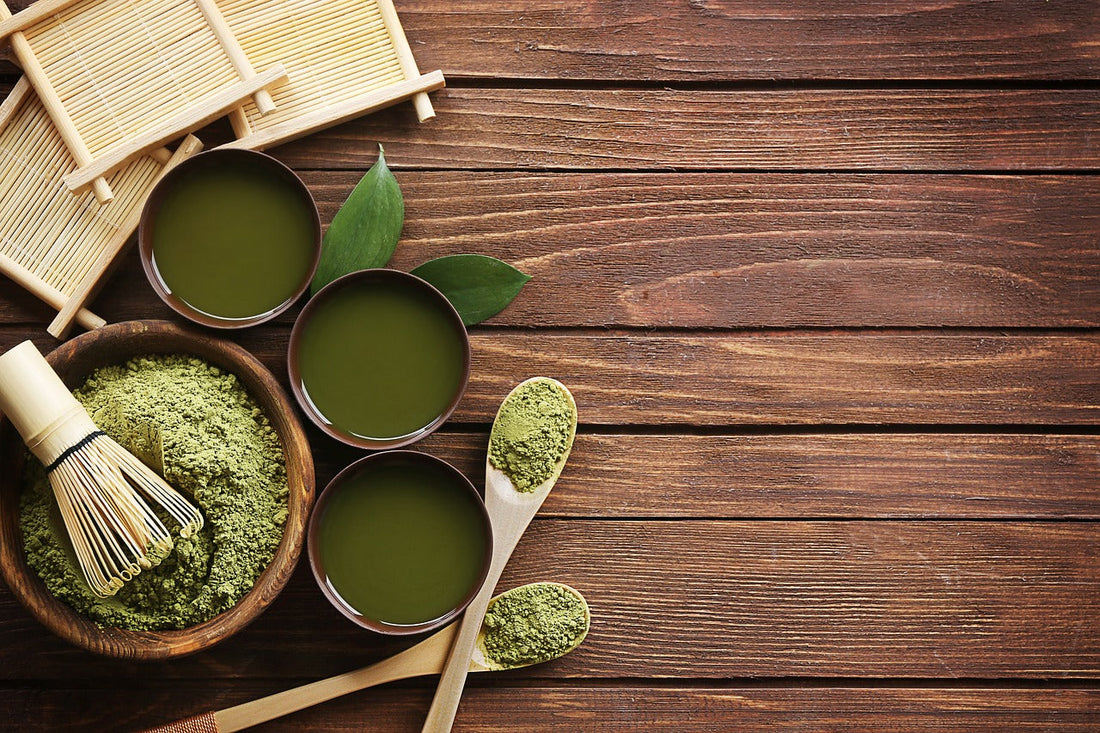In recent years, matcha green tea has become one of the most talked-about superfoods, embraced by health-conscious individuals around the world. Known for its brilliant green color, rich flavor, and powerful nutritional profile, matcha offers far more than just a morning energy boost. This finely ground Japanese tea powder is deeply tied to Zen Buddhist traditions, where it has been used for centuries to promote focus, mindfulness, and balance during meditation.

What is Matcha?
The word matcha (抹茶) translates to “fine powdered tea.” Unlike regular green tea, where leaves are steeped and discarded, matcha is made by whisking the whole tea leaf—stone-ground into a fine powder—directly into hot water often using a chawan bowl. This means you consume the entire leaf and benefit from all its nutrients, antioxidants, and amino acids.
Matcha was first brought to Japan in the 12th century by Zen monk Myōan Eisai, who recognized its ability to promote calm alertness during meditation. By the 15th century, Japanese tea growers perfected the shade-growing method that gives matcha its vibrant green color and nutrient-dense profile. This process increases chlorophyll and L-theanine while preserving delicate amino acids.
Mindful Energy: The Role of L-Theanine and Caffeine
Matcha is unique because it delivers a balanced, sustained energy boost. The natural caffeine in matcha provides alertness, while L-theanine, an amino acid, promotes relaxation and concentration. This combination results in what many call “calm focus,” making it a preferred choice for meditation, studying, or creative work.
Antioxidant Powerhouse
One of the most compelling reasons to drink matcha is its high antioxidant content. Specifically, catechins like EGCG (epigallocatechin gallate) play a role in:
-
Supporting heart health by lowering LDL cholesterol
-
Boosting metabolism and aiding weight management
-
Protecting cells from oxidative stress that can lead to chronic disease
Matcha also contains vitamins C and E, which strengthen the immune system, along with B-complex vitamins that support brain and nervous system health. Minerals such as magnesium, potassium, and iron add to its nutritional benefits.
Detoxifying Properties of Matcha
Because of its high chlorophyll levels, matcha is also known for its natural detoxifying properties. Chlorophyll helps flush out toxins from the body and supports liver health, making matcha a gentle way to promote overall wellness.

Matcha in Japanese Culture
Beyond its health benefits, matcha is central to Japanese culture. The Japanese tea ceremony (Chadō 茶道) is more than just preparing tea—it is a spiritual practice emphasizing harmony, respect, purity, and tranquility. Matcha plays a starring role, representing mindfulness and a deep connection to tradition.
Modern Uses of Matcha
Today, matcha is not only enjoyed as a traditional tea but also incorporated into countless recipes—from matcha lattes and smoothies to desserts like ice cream, mochi, and cakes. Social media has further amplified its popularity, with influencers showcasing vibrant green drinks and creative culinary uses.
Why Matcha is Here to Stay
From the days of Zen monks to modern health research, matcha has proven its lasting value. Whether you’re drawn to its antioxidant-rich superfood profile, its cultural history, or its ability to promote focus and relaxation, matcha is more than just a trend—it’s a timeless addition to a healthy lifestyle.
Discover our Matcha & Teaware Collection and bring the art of Japanese tea into your everyday rituals.


